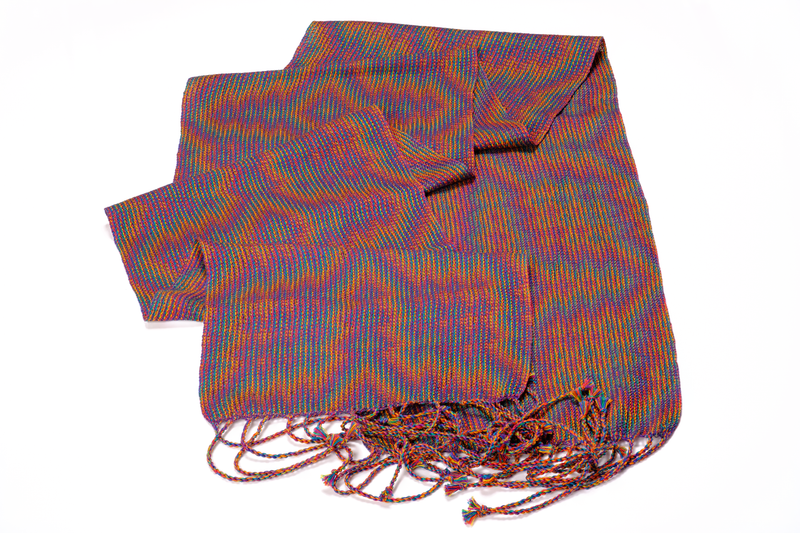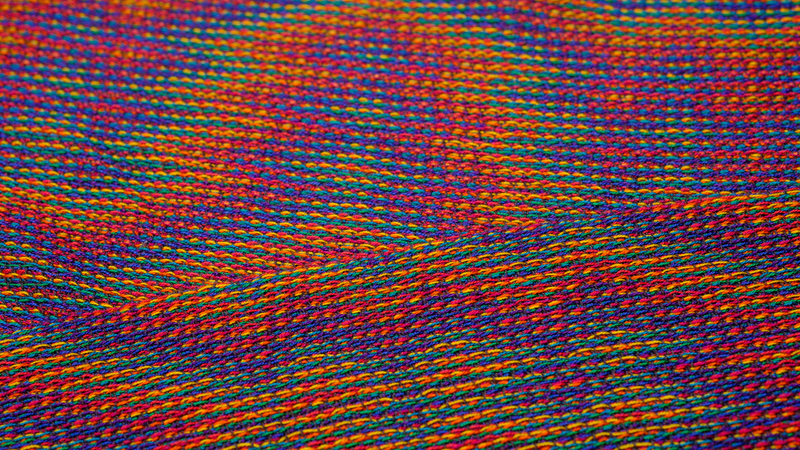As we are nearing the end of 2021, it is safe to conclude that my weaving year has revolved around echo threadings. I started using two parallel threadings in Turned Taquete, and tried out three echoes with the Corris effect. Next up were the echo-4 and echo-8 techniques of Marian Stubenitsky, for which I also became acquainted with network treadlings. I have had so much fun exploring echoes in this way.

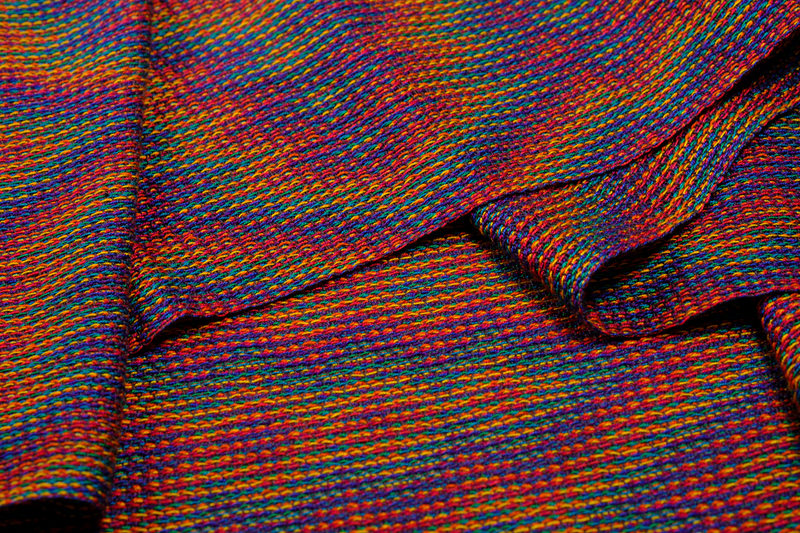
Along the way, I got over my hesitation of using fine yarn. Echo threadings in fine yarns give such beautiful interplays of colors. I especially fell in love with rainbow palettes, and made some bright and colorful shawls as a result. One of my latest projects incorporates all the weaving-related things I have explored this year: I wove a shawl in echo-8 using a network treadling, a rainbow palette, and Ne 20/2 cotton.

Oh so fine
This cotton by Venne Colcotton is the finest yarn to make it to my loom yet. A mini cone of 12 gram already contains 180 m of thread, and 8 mini cones are precisely enough for one shawl’s worth of warp. There are dozens of colors to pick from, so you can go all out in obtaining a nice mix of 8 colors for the warp.

I picked out a nice rainbow palette in my usual color sequence of pink – red – orange – yellow – green – turquoise – blue – purple. For the weft, I usually tend to go with black. However, I decided to change this up just a little bit, and chose dark grey instead.
A fine design line
Before I started designing, I made some calculations to determine how much design room I had. I wanted my warp to be between 2.5 and 3 m long. With the available 180 m of yarn per color, I knew my design line had to be about 60–70 threads wide. After adding the echoes, I would end up with a warp of 480–560 ends. With my intended sett of 16 ends per cm, my warp would become 30–35 cm wide. Perfect for a scarf. So, the math worked out and I turned to Fiberworks.

I decided to revisit a star design that I previously used as a basis for shadow weave and advancing twill projects. I really like the star shape, but also the spaces between the points of the star. This design was on my list to use as a basis for an echo project for a while. Yet, being more than 60 threads long, the warp quickly becomes too wide for the intended project after the addition of the echo threadings.
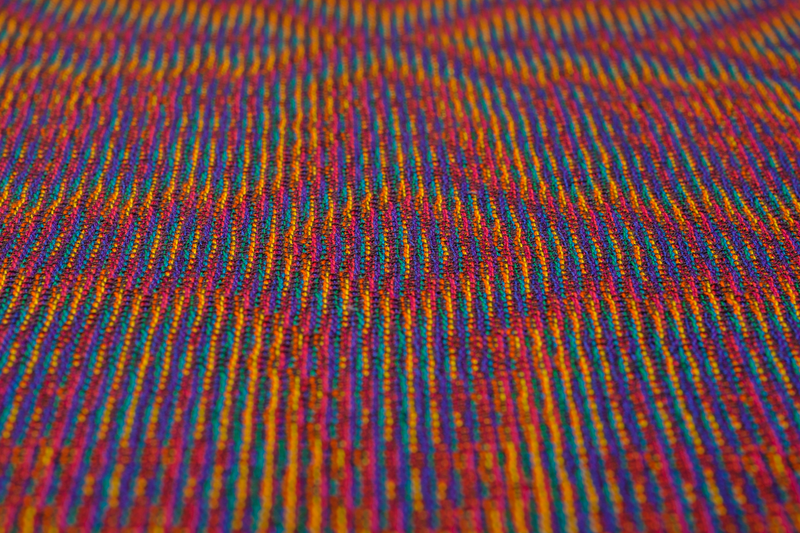
The advantage of using fine thread is that such a considerable design line still limits the echo-warp a to shawl-suitable width. The design line I settled on was 65 threads, exactly in the middle of my calculated range. This resulted in an echo-8 warp of 520 threads or 32.5 cm wide.
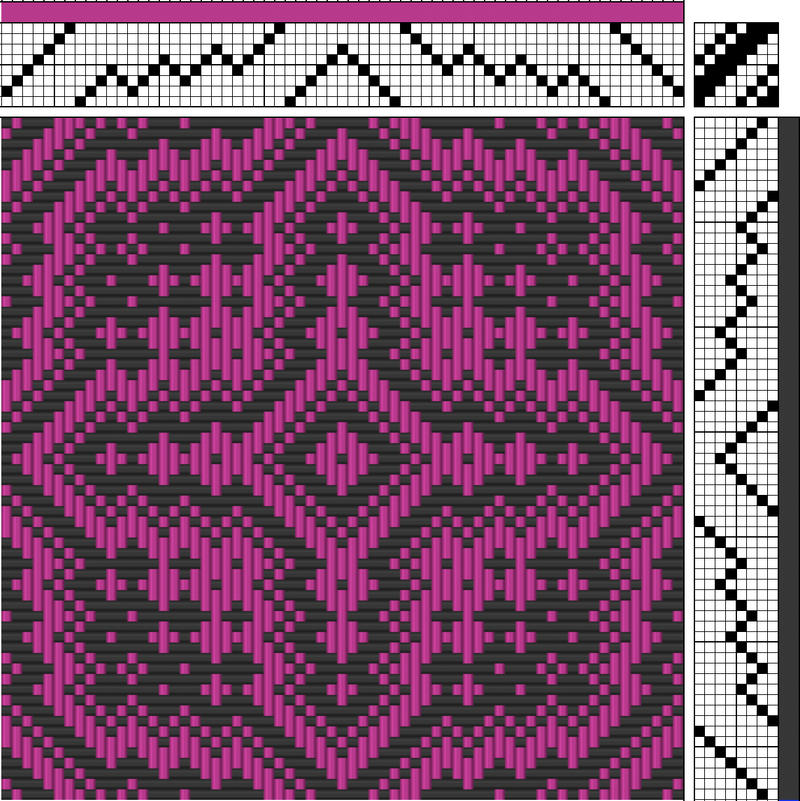
Turning out fine
This yarn is so much fun to work with. At first, the thin threads felt odd in my hands. But I soon got used to it, and really enjoyed threading the heddles and sleying the reed. I used a sett of 16 ends per cm, which made for easy sleying in a 4-dent reed. Four ends per dent nicely aligned with my color sequence of 8 colors: pink through yellow in one dent, green through purple in the second, and repeat. However, I guessed beforehand that I would not be able to weave to square. So, I expected slightly elongated stars to appear when weaving.

They were elongated indeed, even more than I anticipated. I considered sleying to a wider sett, but decided to keep on weaving for two reasons. First and foremost, I liked to look of the elongated motifs. Second, sleying for 14 or 15 ends per cm in a 3-dent or 4-dent reed would be prone to error. I decided not to risk it. Instead, I ordered myself 3.5-dent and 7.5-dent reeds for future projects with fine yarn.
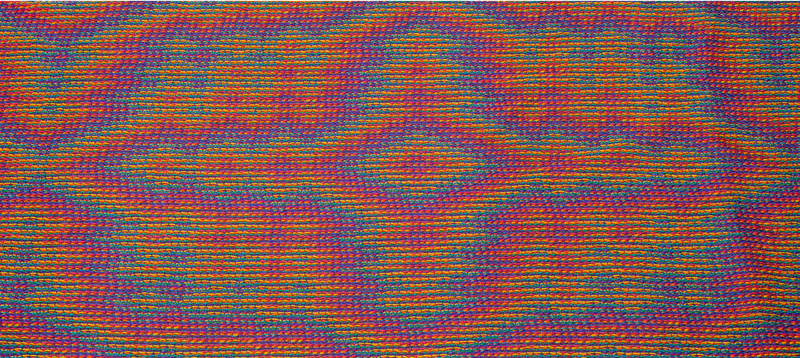
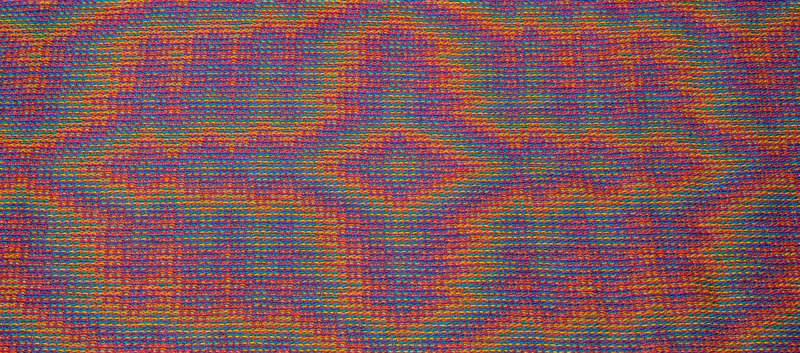
Since my warp was not very long and I wove less than 16 picks per cm, my shawl progressed quickly. When I decided to go along with the elongated motifs, it had not occurred to me that my warp length might not match with the length of the motif. I just finished my fourth star when I saw the end of my warp nearing.
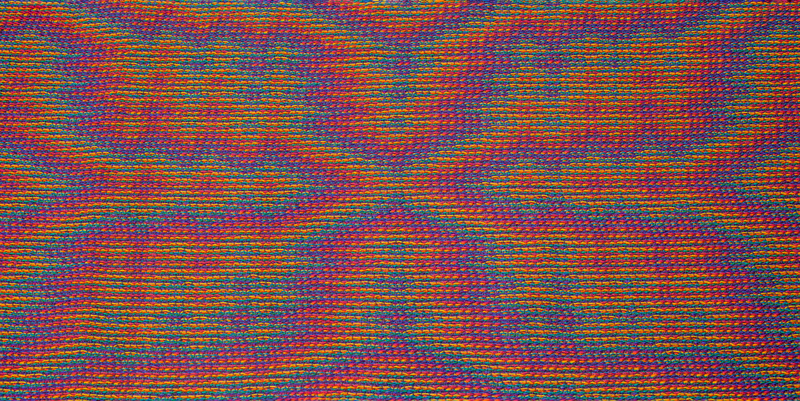
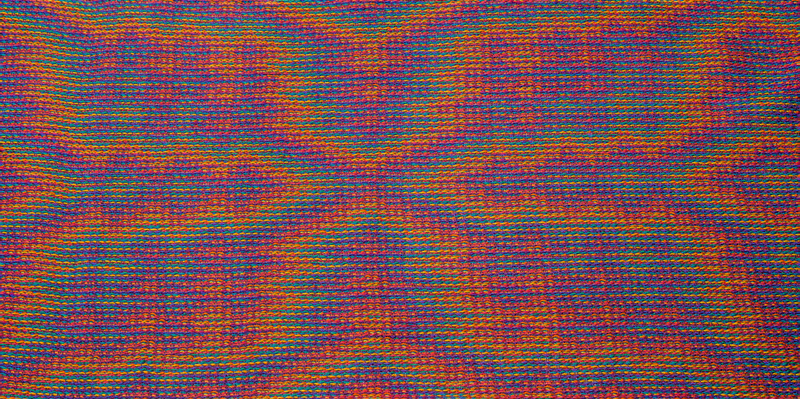
It was clear I would not be able to squeeze out a fifth star, but there was enough room left for half a star. It felt like such a waste to leave this half-star unwoven. Luckily, the clover-shape that occurs in between the stars (but is mostly overpowered by them) is also very nice. So, I was sure that adding half of the motif would turn out just fine.
The future seems fine
I love the color interplay of the fine threads. I am also pleasantly surprised by the softness of the shawl — much softer than the shawls in mercerized cotton I have woven before. I am sure this will not be my last project with very thin cotton. My curiosity to try out Ne 40/2 cotton grows steadily, so I might go even finer in the not too distant future. After a year of weaving with echoes, I am far from bored. Let’s see what 2022 will bring.
